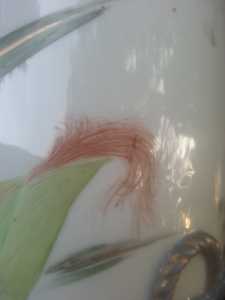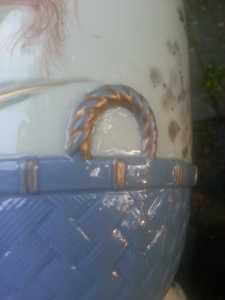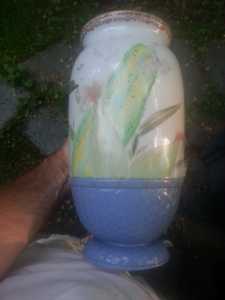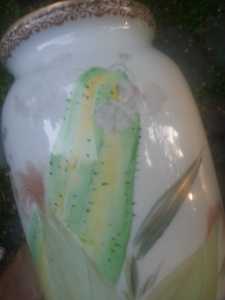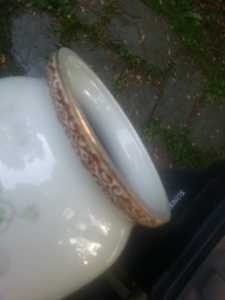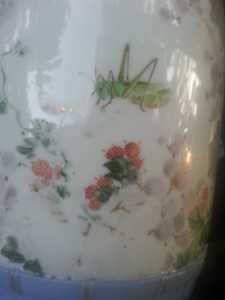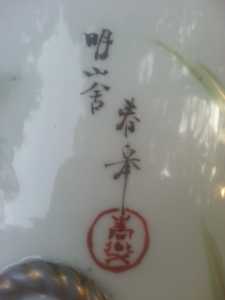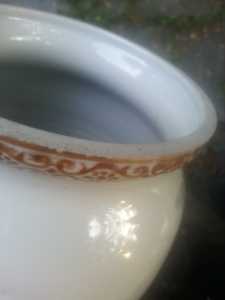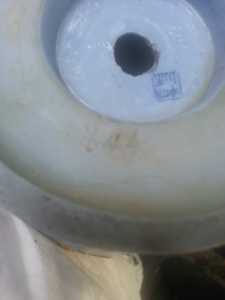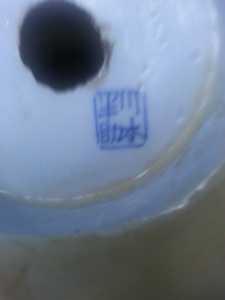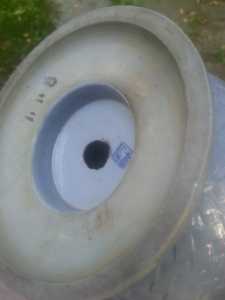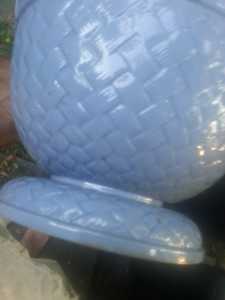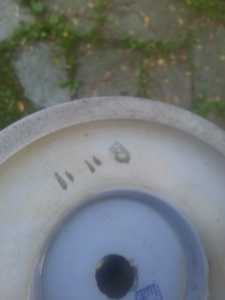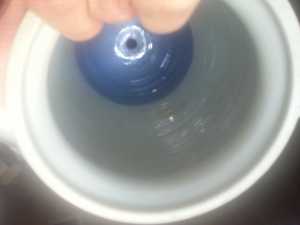The Chinese and Asian Art Forum. For Fans, Collectors and Dealers.
 Basic Rules For the BidAmount Asian Art Forum: Talk about whatever you want. You can even discuss and offer things that are for sale if they are authentic. Maximum image file size per post is 2 MB. Images of 700pxl x 700pxl are optimal if saved at a medium resolution. Be respectful of others and enjoy yourself. Click the YouTube link for a brief tutorial on using the forum. You can also EMBED Videos by cutting and pasting from You-Tube, Vimeo etc.
Basic Rules For the BidAmount Asian Art Forum: Talk about whatever you want. You can even discuss and offer things that are for sale if they are authentic. Maximum image file size per post is 2 MB. Images of 700pxl x 700pxl are optimal if saved at a medium resolution. Be respectful of others and enjoy yourself. Click the YouTube link for a brief tutorial on using the forum. You can also EMBED Videos by cutting and pasting from You-Tube, Vimeo etc.
NOTE: To post an item or add a new post, click open the category title from the FORUM LIST, and CLICK the Blue ADD TOPIC button.
So, I am a bit fascinated and perplexed by this one. Can you guys please tell me what you think? Surely the top must have been ground down, but from what original shape I'm not sure. It was made in two sections, corresponding to the two porcelain colors separating the top and bottom sections. I am not sure if I have seen an example like this where they seem to have dyed or colored the porcelain itself. Is that common? I thought at first it was just a glaze color but then I saw the unglazed portion of the foot was also the same light blue. I'm not sure if the basket carving was done by hand or some other means like a mold of some sort. It's pretty impressive I think either way. The painting has some very nice detail. I especially like the corn silk. I can't seem to figure out the mark and I don't know what the script says. For some reason the seal looks familiar to me but I'm not sure from where. The recessed center of the foot is rather deep and looks older in that area than the rest of the vase. There are some numbers and odd markings on the base I'm not sure what to make of them. The numbers look like 804 and seem kind of old timey writing style. Maybe that's a collection number? At any rate, I look forward to hearing what others think of it. Cheers! John
Have you tried to find the mark on the usual sites? The one on the base, I mean.
I like the grasshopper but quite honestly, I find the vase rather twee and uninteresting. I particularly dislike the gold. I am guessing it is Japanese mid to late 20th c. The photos are so bad, I can't really tell.
Have you bought this for yourself? How much was it?
@julia I did try to find the mark but no luck. Tried Chinese and Japanese. I had never heard the word twee before so you have expanded my vocabulary. I feel like the script and seal mark is more a Chinese thing. And the mark on the bottom in the square box is as well. I also thought the gilt use looked Japanese, but now I'm not so sure. The marriage of the two sections, with different colors, and all the carving work I think make this interesting and worthy of further investigation. Just, out of curiosity, are you clicking on the photos? If you do they get a little clearer, although they are still shabby I know. New phone coming soon!
That is interesting that you haven't heard "twee" before. Maybe it hasn't travelled over oceans. It is a funny little word but quite handy! 😊
I am now on my pc and yes, the pictures are better. I will extend my dating down to 1940s, that blue and the gilding would fit in that time, also the style. I do like the grasshopper bit, I can see the upper painting has been quite nicely done, but sorry, on the whole I find it very unappealing mainly due to the blue tone, the gilding and the dated look.
The reasons I think Japanese are the way it has been painted, the lettering looks quite Japanese (but I am no expert on this and it might equally be Chinese) but also a chinese mark is rarely off-set that much. Mike posted a jug or tea pot where it is off-centre but here it is clearly to one side.
@julia Have you seen others where the porcelain itself has been colored? I mentioned this before, but the blue of the basket is not a glaze color, it is the actual porcelain which apparently had pigment mixed into it. Just wondering if that would be done more in China, Japan, and if that helps to date it in terms of being a technique used more at a particular time, etc? Also, are there other examples of Japanese putting a square around a mark? I don't think I've ever seen one so I'd like to see a comp if anyone has one.
That is interesting, how do you know that the porcelain is coloured? Why isn't the underside of the base and the part where the hole has been made also blue.
You must have missed the Gotheborg and the litaxulingkelley sites when you were checking marks as both show them in squares.
@julia I looked through Gotheborg but didn't see any Japanese marks in squares, except maybe some satsuma marks, but this obviously isn't satsuma. So I somehow must have missed them. Do you recall which other types had squares? The entire underside is blue, it just appears chalky colored because it is unglazed in places and my pictures are well...my pictures. But the other way you can tell is because it can be seen on the inside as well. Here is a picture which shows that:
I immedieatly thought humpty Dumpty but i am not sure that is much use.
However The backmark does lool like a familiar Japanes backmark which i will term a fuku mark, at least in that style and that i saw when reearhcing something but cannot recall where, will let you know if i find it. FUKU means happiness.
John, there are several of them on both sites. It will be easier for you to go and look than it will be for me to look and report back. If I remember, on Gotheborg you should start on the first page. Fuku marks also appear in squares but I haven’t seen one quite like this.
Thanks for visiting "The BidAmount Asian Art Forum | Chinese Art"
If you sell on eBay, or have a shop feel free to post images and descriptions and links.
Check back often for discussion about the latest news in the Chinese art and antique world. Also find out about the latest Asian art auctions at Sotheby's, Christie's, Bonhams and Tajans.
Auction results for: fine porcelain, ceramics, bronze, jade, textiles and scholar's objects. As well as Japanese, Thai, Vietnamese and other Asian cultures.
Thank you,
Peter Combs
Topics and categories on The BidAmount Asian Art Forum | Chinese Art
Kangxi vases, Kangxi dishes and chargers, Kangxi ritual pieces, Kangxi scholar's objects, Qianlong famille rose, Qianlong enamels, Qianlong period paintings, Qianlong Emporer's court, Fine porcelain of the Yongzheng period. Chinese imperial art, Ming porcelain including Jiajing, Wanli, Xuande, Chenghua as well as Ming jades and bronzes.
The BidAmount Asian Art Forum | Chinese Art
A free Asian art discussion board and Asian art message board for dealers and collectors of art and antiques from China, Japan, Korea, Thailand, Cambodia, Vietnam and the rest of Asia. Linked to all of the BidAmount Asian art reference areas, with videos from plcombs Asian Art and Bidamount on YouTube. Sign up also for the weekly BidAmount newsletter and catalogs of active eBay listing of Chinese porcelain, bronze, jades, robes, and paintings.
The art of calligraphy - and for the ancient Chinese it certainly was an art - aimed to demonstrate superior control and skill using brush and ink. Calligraphy established itself as one of the major Chinese art forms during the Han dynasty (206 BCE - 220 CE), and for two millennia after, all educated men were expected to be proficient at it.
The Museum’s collections of Asian art span nearly five millennia and encompass the cultures of China, the Himalayas, India, Japan, Korea, and Southeast Asia. In 2007, the Museum launched an initiative to create dedicated galleries for the collection, beginning with a gallery for the arts of Korea ...
Chinese art is full of symbolism, in that artists typically seek to depict some aspect of a totality of which they are intuitively aware.
China Online Museum is the finest online museum of Chinese art. It features Chinese calligraphy, painting, ceramics, bronzes, carving, and other artworks.
Chinese Ceramics & Works of Art. Overview Upcoming auctions Contacts Auction results ... Christie’s sales of Chinese ceramics and works of art showcase centuries of Chinese history. Held throughout the year in London, New York, Paris and Hong Kong, they attract a wide audience of collectors and connoisseurs vying for pieces as diverse as ...
Explore Asian Art Week. Contact the Specialist Department. Chinese Paintings ... Senior Specialist, Head of Sale. [email protected]. Tel:+1 212 641 5760. Bid in-person or online for the upcoming auction:Fine Chinese Paintings on 10 September 2019 at New York. Bid in-person or online for the upcoming auction:Fine Chinese Paintings on 10 ...
Discover an abundance of must-see art from all corners of a vast continent at Christie’s NY Asian Art Week. From contemporary classical and Chinese paintings to works with exemplary provenance from the Art Institute of Chicago, our Rockefeller Paza galleries will be full of ancient treasures and contemporary masterworks in a salute to the vibrant arts of Asia.
Sold to benefit The Art Institute of Chicago’s Asian Art Acquisition Fund, the sale features 84 lots with a focus on Ming and Qing porcelains, and offers a rare insight into the taste for collecting Chinese ceramics and works of art in the Midwest from the end of the 19th century through the 1980s. Highlights include two Wanli wucai garlic-head vases, a Qianlong mark and period, blue and ...
Specialist, Chinese Paintings, Christie's London Dr Malcolm McNeill is a Specialist in Chinese Paintings at Christie’s, based in London. He previously worked as an assistant curator of the Chinese collections and the Victoria and Albert Museum in London, as a researcher at the British Museum, and as a translator and tour guide at the National Palace Museum in Taipei.
The Christie's Education 2020 Conference: The Chinese Art Market 18 Jun 2019 Christie’s Education is delighted to announce our first international academic conference in Asia which will take place in Hong Kong from 26-27 November 2020 at the Hong Kong Convention and Exhibition Centre and will run in parallel with Christie’s Hong Kong Autumn Auctions.
The summer Chinese Art sale in Hong Kong will feature works of art from several private collections, including Qing porcelains and textile from the collection of the legendary Chinese art dealer A. W. Bahr (1877–1959), fine gilt bronze Buddhist sculptures from an old Hong Kong collection, an East Asian collection of Qing dynasty wine cups and jades, and a Japanese collection of Song ceramics ...
Sotheby's Chinese Works of Art Department holds two auctions each year in London, New York, Hong Kong and Paris.
Chinese Art - View Auction details, bid, buy and collect the various artworks at Sothebys Art Auction House.
With more than 340 Chinese works of art dating from the Neolithic to the Republic periods, highlights of this sale include a selection of Qing Imperial monochromes from the collection of Arnold and Blema Steinberg, early ceramics from the Art Institute of Chicago and Chinese porcelain and works of art from the collection of Henry Arnhold.
Results: Sotheby's Asia Week achieved $52.4 million in six strong auctions, exceeding pre-sale estimates. With 76.5% of lots sold and 60.3% of lots surpassing high estimates, the Asian art sales at Sotheby's indicate continued collector interest in the finest works of art from China, India and and the Himalayas.
Today's sale of Important Chinese Art will proceed as planned with sessions at 10 AM and 2 PM EDT. Sotheby's will be monitoring the weather conditions throughout the day and will be available to coordinate alternative bidding options should conditions make it difficult for clients to attend the auction in person.
Bonhams Chinese Art department is renowned for offering the finest works of art representing the richness and breadth of China's artistic heritage, particularly Imperial porcelain, white and spinach green jades, cloisonné and Buddhist art. Specialised international auctions are held globally, including London, Hong Kong and San Francisco.
Bonhams : Chinese Works of Art We use cookies to remember choices you make on functionality and personal features to enhance your experience to our site. By continuing to use our site you consent to the use of cookies. Please refer to our privacy and cookie policies for more information.
Bonhams Fine Art Auctioneers & Valuers: auctioneers of art, pictures, collectables and motor cars. We use cookies to remember choices you make on functionality and personal features to enhance your experience to our site. By continuing to use our site you consent to the use of cookies. ... Chinese Art (US) General enquiries
Bonhams : Fine Chinese Art We use cookies to remember choices you make on functionality and personal features to enhance your experience to our site. By continuing to use our site you consent to the use of cookies. Please refer to our privacy and cookie policies for more information.
Bonhams Fine Art Auctioneers & Valuers: auctioneers of art, pictures, collectables and motor cars Bonhams : Asian Art We use cookies to remember choices you make on functionality and personal features to enhance your experience to our site.
Bonhams are international auctioneers of fine Chinese and Japanese art. We specialise in rare Imperial and Export Chinese ceramics and works of art, as well as Japanese ceramics, fine and decorative works of art from the Neolithic Period to the 20th century. View on map
Bonhams Fine Art Auctioneers & Valuers: auctioneers of art, pictures, collectables and motor cars. We use cookies to remember choices you make on functionality and personal features to enhance your experience to our site. By continuing to use our site you consent to the use of cookies. ... Asian Art Bonhams. Work. 22 Queen St.
